Scientist Paper Dolls: The Full Collection

You wanted the set, you got the set! Download your favorites by clicking on their faces.
(Please comment below to make requests for new paper dolls you’d like to see! )
by Steve
This is the paper doll that got this project started in 2011!
Way back when, Steve said, “A couple days ago, I ran across these Arrested Development paper dolls and thought, “I wonder if anyone’s done scientist paper dolls”. I couldn’t find any, so I suggested that maybe we at Mad Art Lab could try and make some.” And so here we are!
Erwin Rudolf Josef Alexander Schrödinger, was an Austrian physicist who developed a number of fundamental results in the field of quantum theory, which formed the basis of wave mechanics: he formulated the wave equation (stationary and time-dependent Schrödinger equation) and revealed the identity of his development of the formalism and matrix mechanics. Schrödinger proposed an original interpretation of the physical meaning of the wave function and in subsequent years repeatedly criticized the conventional Copenhagen interpretation of quantum mechanics (using e.g. the paradox of Schrödinger’s cat).
(from Wikipedia)
by Brian
Marie Curie, née Maria Salomea Skłodowska, was a Polish-French physicist and chemist, born in Poland but working mainly in France, who is famous for her pioneering research on radioactivity. She was the first woman to win a Nobel Prize, the only woman to win in two fields, and the only person to win in multiple sciences. She was also the first female professor at the University of Paris (La Sorbonne), and in 1995 became the first woman to be entombed on her own merits in Paris’ Panthéon.
Her achievements included a theory of radioactivity (a term that the Curies coined), techniques for isolating radioactive isotopes, and the discovery of two elements, polonium and radium. Under her direction, the world’s first studies were conducted into the treatment of neoplasms, using radioactive isotopes. She founded the Curie Institutes in Paris and in Warsaw, which remain major centres of medical research today. During World War I, she established the first military field radiological centres.
(from Wikipedia)
by Brian
“Okay here’s the thing – I could write endlessly about Salvador Dalí; his life, his art, his genius, madness and goofiness, how he and the other Surrealists were heavily influenced by early psychology, how he incorporated atomic theory into his art, how he has influenced me since I was 15-years-old and so on, for pages and pages and pages. Instead, I will direct you lovely folks to his Wikipedia page because he was a fascinating person and you should learn about him and enjoy his wonderful artwork. In honor of his 108th birthday, I have made a Dalí paper doll that I hope captures a little of his essence. There is a burning giraffe involved. Also the famous lobster phone.”
(From Brian’s original post)
by Maggie
“You’ve no doubt seen the awesome paper doll scientists posted so far. Steve’s brilliant idea finally got me off my ass. So here’s my science doll, everyone’s favorite crazy-haired German physicist Albert Einstein.”
(from Maggie’s original post)
by Amy
Richard Phillips Feynman was an American theoretical physicist known for his work in the path integral formulation of quantum mechanics, the theory of quantum electrodynamics, and the physics of the superfluidity of supercooled liquid helium, as well as in particle physics (he proposed the parton model). For his contributions to the development of quantum electrodynamics, Feynman, jointly with Julian Schwinger and Sin-Itiro Tomonaga, received the Nobel Prize in Physics in 1965. He developed a widely used pictorial representation scheme for the mathematical expressions governing the behavior of subatomic particles, which later became known as Feynman diagrams. During his lifetime, Feynman became one of the best-known scientists in the world. In a 1999 poll of 130 leading physicists worldwide by the British journal Physics World he was ranked as one of the ten greatest physicists of all time.
He assisted in the development of the atomic bomb and was a member of the Rogers Commission, the panel that investigated the Space Shuttle Challenger disaster. In addition to his work in theoretical physics, Feynman has been credited with pioneering the field of quantum computing and introducing the concept of nanotechnology.[6] He held the Richard Chace Tolman professorship in theoretical physics at the California Institute of Technology.
(from Wikipedia)
by Cloe
Dame Jane Morris Goodall, DBE (born Valerie Jane Morris-Goodall on 3 April 1934) is a British primatologist, ethologist, anthropologist, and UN Messenger of Peace. Considered to be the world’s foremost expert on chimpanzees, Goodall is best known for her 45-year study of social and family interactions of wild chimpanzees in Gombe Stream National Park, Tanzania. She is the founder of the Jane Goodall Institute and has worked extensively on conservation and animal welfare issues.
(from Wikipedia)
by Maggie
“Another of my heroines in the field of computing: Grace Hopper. I can almost guarantee she will be the only one of our paper dolls who has a naval destroyer named after them.
Everyday on my way to work I pass a piece of the Harvard Mark I computer and most times I feel like saluting Grace Hopper. She was instrumental in the development of COBOL (and standards for languages), taught at Vassar and worked on the UNIVAC I. Did I mention she has a Navy destroyer named after her??? So for your crafting fun, I give you Amazing Grace Murray Hopper.”
(from Maggie’s original post)
by Maggie
“Ada Lovelace (Augusta Ada King née Byron, as in daughter of Lord Byron… that Lord Byron) was a writer who assisted Charles Babbage with his analytical engine. And while she’s commonly referred to as simply ‘a writer’, she’s so much more than that and, IMHO, deserved to rightly be described as a mathematician and quite possibly the world’s first computer programmer. But no matter what you call her, she was an amazing individual and her contributions to math and computing are very real and tangible. And she’s one of my heroes.” (complete with steampunk add-ons!)
(from Maggie’s original post)
by Cloe
William Sanford “Bill” Nye (born November 27, 1955), popularly known as Bill Nye the Science Guy, is an American science educator, comedian, television host, actor, writer, and scientist who began his career as a mechanical engineer at Boeing. He is best known as the host of the Disney/PBS children’s science show Bill Nye the Science Guy (1993–98) and for his many subsequent appearances in popular media as a science educator.
(from Wikipedia)
by Steve
“One of the things we did with these was print off stacks of them to give out, with crayons, at Dragon*Con. The evening before I left for Atlanta, it occurred to me that we didn’t have a one for Phil Plait, who would actually be at the convention.
So, instead of packing my bags and getting a good night’s sleep like a normal, sane person might do the evening before a seven-hour road trip, I sat down and started scribbling.
And here’s the result: The Phil Plait paper doll, officially endorsed by Phil himself.
…Well, he said he liked it.
…Well, he didn’t say he didn’t like it.
…Well, we haven’t actually received a cease and desist letter …yet.”
(from Steve’s original post)
by Cloe
“Now you can have your very own Carl Sagan paper doll, complete with two classic Sagan ensembles as well as an apple pie (made from scratch), the planet Venus and a copy of Contact. Color him in, cut him out and hang him around your home or office.”
(from Cloe’s original post)
by Steve
“This one’s Nikola Tesla who, according to Wikipedia, was responsible for alternating current, wireless communication, a high-performance electric sports car and the 1991 album“Psychotic Supper”. Wait. No. Just the first two.”
(from Steve’s original post)
by Ryan
Alan Mathison Turing was a British mathematician, logician, cryptanalyst, and computer scientist. He was highly influential in the development of computer science, giving a formalisation of the concepts of “algorithm” and “computation” with the Turing machine, which can be considered a model of a general purpose computer. Turing is widely considered to be the father of computer science and artificial intelligence.
“Why is he a robot? I propose that he introduced the now famous Turing Test ironically and that he was actually an android from the future.”
(from Ryan’s original post)
by Cloe
“‘Weird and creepy.‘ That’s what Neil deGrasse Tyson has to say about my paper doll on The Verge.”
(from Cloe’s original post)
by Ryan
Dr. Brian Cox isn’t a groundbreaker like Newton or Einstein. He is instead a brilliant popularizer of science like Carl Sagan or Neil Degrasse Tyson. He is also one of the few literal rock-star scientists. Before working at Cern and presenting the Christmas Lecture at the Royal Institution, he was a keyboard player for the British bands Dare and D:Ream.
(from Ryan’s original post)
by Cloe
Chris Hadfield is a retired Canadian astronaut who was the first Canadian to walk in space. An engineer and former Royal Canadian Air Force fighter pilot, Hadfield has flown two space shuttle missions and served as commander of the International Space Station. (from Wikipedia) He also plays space guitar.
by Dale
Belle Benchley was the first director of the San Diego Zoo. She revolutionized zoo-keeping by insisting that, in every decision, the animals come first. She made sure that all animals had private enclosures they could return to when being in the public eye stressed them out, and that the zoo kept a permanent veterinary staff on hand. Under her directorship, animal lifespans dramatically lengthened and the zoo evolved from a place of cruel entertainment to one of enlightened education. You can read her full story (part of MAL’s Women in Science series) here.
by Dale
Marie Tharp’s rigor and care in mapping the ocean floor revealed the Mid-Atlantic Rift for the first time, and provided thereby the mechanism for the continental drift model of geological change. Her maps of the topography of the world’s ocean floors revealed a dramatic new world which caught the imagination of a new generation of oceanographers and oceanographic cartographers. You can read her full story (part of MAL’s Women in Science series) here.
by Brian
Matt Lowry is a friend of MAL, and got his very own paper doll, Flat Matt, because he couldn’t come to CONvergence with us in 2016. He teaches high school and college physics, spreading SCIENCE! throughout the land and fomenting awesomeness in our future. A self-described skeptic, he believes in Carl Sagan’s adage that “extraordinary claims require extraordinary evidence.” He describes his teaching-by-example style as “sacrificing myself for science”, often performing demonstrations that challenge a number of woo-y claims such as walking on broken glass, board breaking, and the always-intimidating bed of nails. He’s also done a bit of firewalking, and can, in detail, explain that Santa cannot possibly be a real man, because physics.
(from Beth’s original post)
Who are we missing? Who would you love to see as a paper doll? Let us know in the comments; we may already be working on your favorite scientist. Print, color, cut, and enjoy!

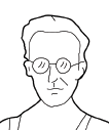

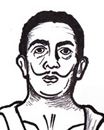
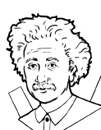


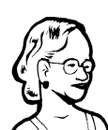
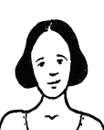
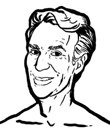
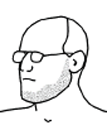
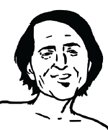



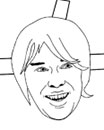




This is awesome! Here are a few female physicist/astrophysicist suggestions: Jocelyn Bell Burnell, Vera Rubin, & Mae Jemison.
Thank you for the suggestions! Making more dolls, and in particular more women scientists sounds like a great idea!
Emmy Noether!!!!!!!!!!!
It’s impossible to overstate her contributions to modern physics. Also she was a badass who gave zero fucks that early 20th century ladies weren’t supposed to do the maths
Sally Ride, Shannon Lucid and Hedy Lamarr? Ditto on Mae Jemison, too. Oooh, Stephen Hawking? And a Dian Fossey to go with Jane Goodall.
(And in the totally fiction category – Stargate set?)
Definitely need a Rosalind Franklin! She is an admirable and often forgotten physical chemist! Watson and Crick could not have figured out DNA without her!
Jane link is broken
Fixed it, thank you!
How about Rachel Carson, a pioneering environmentalist and author of the Silent Spring, and I beleive her name is Roselaind Franklin, she was a key member of the Crick-Watson team that discovered DNA. Unfortunately like many women scientists, her accomplishments have been forgotten,
R. Buckminster Fuller. Buckyballs AND Buckminsterfullerene AND Dymaxion, etc.